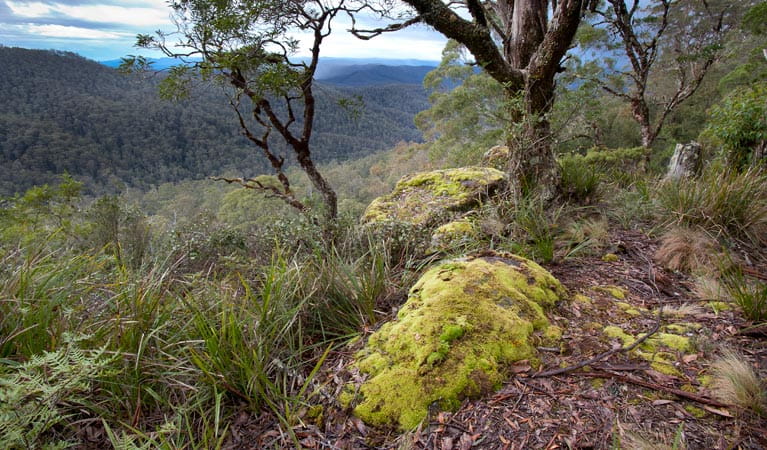Cunnawarra National Park
Overview
World Heritage-listed Cunnawarra National Park, 70km from both Armidale and Dorrigo, is a great place for 4WD touring, hiking, camping and birdwatching.
Read more about Cunnawarra National Park
Experience the diversity of rural NSW at beautiful Cunnawarra National Park, which links the snow gum high country of New England National Park with the scenic ranges of Oxley Wild Rivers National Park.
The park is part of the Gondwana Rainforests of Australia World Heritage Area, and features many incredible vistas to explore on foot, by bike, or in a 4WD. Marvel at the spectacular gorges, cliff lines, and deep, steep-sided valleys of the Great Escarpment, towering eucalypt forest along Styx Forest Way, and ancient Antarctic beech rainforest at the headwaters of Georges Creek. Be sure to check out the view from Beech lookout, where you can gaze down upon some of the tallest trees in all of NSW.
Cunnawarra is popular with travellers seeking a good one-day 4WD touring adventure from Armidale or Dorrigo, as well as campers on their way to nearby Wattle Flat campground in Styx River State Forest. Both Wattle Flat and Georges Junction offer campgrounds that make a good base from which to enjoy quiet forest drives through the remote ranges around the park.
Local alerts
For the latest updates on fires, closures and other alerts in this area, see https://www.nationalparks.nsw.gov.au/visit-a-park/parks/cunnawarra-national-park/local-alerts
Contact
- in the North Coast and Country NSW regions
Cunnawarra National Park is always open, but may have to close at times due to poor weather or fire danger.
-
-
Coffs Harbour office
02 6652 0900
Contact hours: Monday to Friday, 8.30am to 4.30pm. - 4/32 Edgar St, Coffs Harbour NSW 2450
-
Email: npws.coffscoast@environment.nsw.gov.au
-
Coffs Harbour office
-
-
Walcha office
02 6777 4700
Contact hours: Monday to Friday, 8.30am to 4.30pm. - 188W North Street, Walcha NSW 2354
-
Email: npws.nea@environment.nsw.gov.au
-
Walcha office
Visitor info
All the practical information you need to know about Cunnawarra National Park.
Map
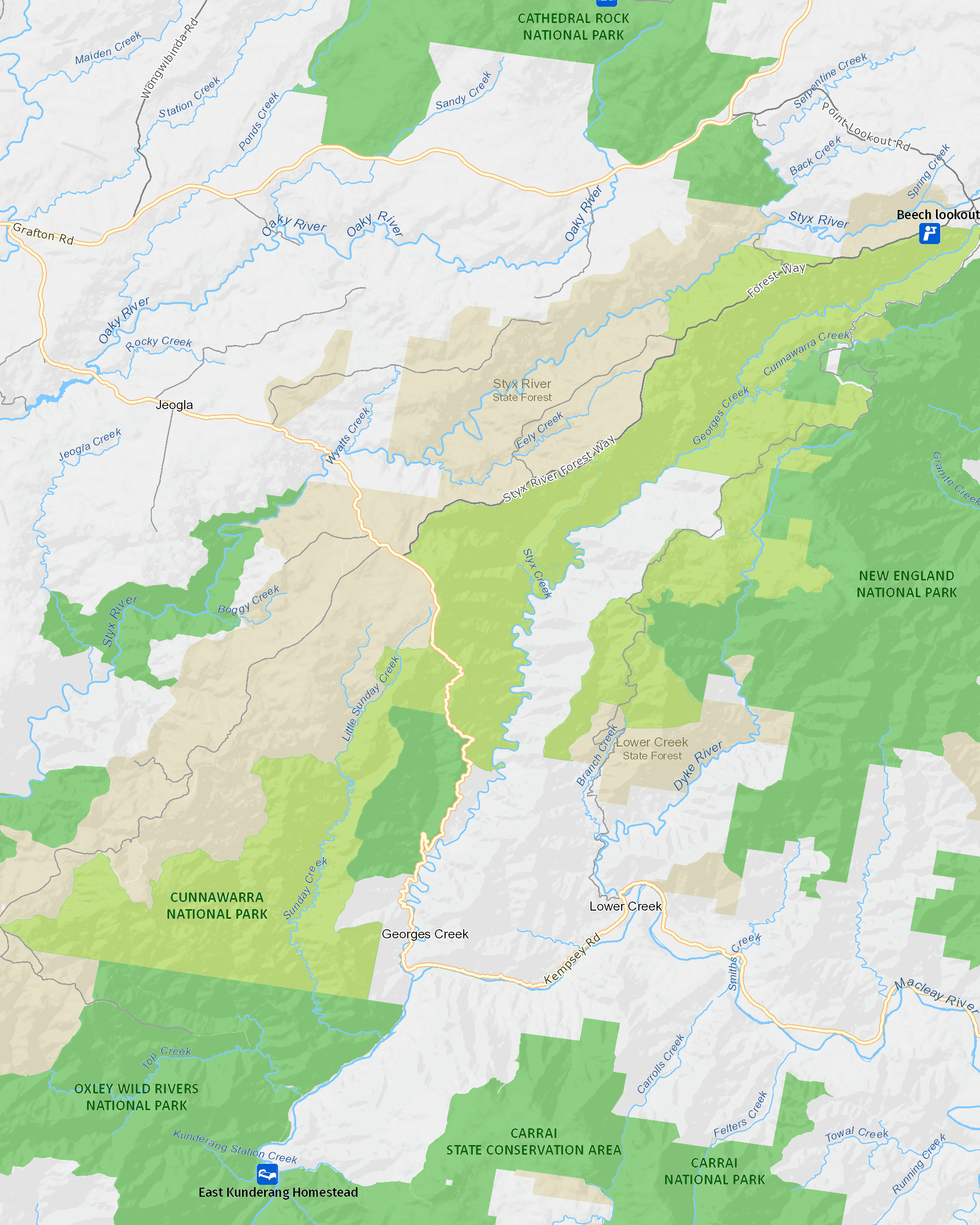
Map legend

Getting there and parking
From Dorrigo:
- Travel west along Waterfall Way towards Ebor/Armidale
- Turn left to follow Waterfall Way towards Ebor/Armidale
- Continue to Ebor
From Ebor:
- Travel west along Waterfall Way towards Armidale
- Turn left to stay on Waterfall Way towards Armidale
- After about 7.6km, turn left onto Point Lookout Road.
- Continue onto Styx Forest Way and return back to Armidale/Grafton Road
From Armidale:
- Travel east along Waterfall Way for approximately 65km
- Turn right onto Armidale Kempsey Road just past Wollomombi
- After about 20km, turn left onto Styx Forest Way.
- Continue onto Point Lookout Road to return back to Waterfall Way Road
Parking
- Beech lookout See on map
By bike
Check out the Bicycle information for NSW website for more information.
By public transport
For information about public transport options, visit the NSW country transport info website.
Weather, temperature and rainfall
Summer temperature
Average
13°C and 24°C
Highest recorded
32.8°C
Winter temperature
Average
1°C and 13°C
Lowest recorded
-7°C
Rainfall
Wettest month
January
Driest month
June
The area’s highest recorded rainfall in one day
84mm
Facilities
Barbecue facilities
Maps and downloads
Prohibited
Pets
Pets and domestic animals (other than certified assistance animals) are not permitted. Find out which regional parks allow dog walking and see the pets in parks policy for more information.
Smoking
NSW national parks are no smoking areas.
Nearby towns
Dorrigo (70 km)
Dorrigo is a serene country town and the gateway to Dorrigo National Park. Its close to the edge of the escarpment above the Bellingen Valley.
Armidale (78 km)
During autumn the parks and gardens around Armidale show their beautiful colours. Enjoy a drive along the Waterfall Way, stopping at waterfalls and craggy gorges in the rugged countryside.
Guyra (116 km)
Fishing in one of Guyra's numerous and beautiful streams is a great way to relax and get back to nature. You might land a big trout, too! If you're looking for more active pursuits, you're within easy reach of a number of scenic national parks, where rock climbing, kayaking horseriding and bushwalking are just some of your options.
Learn more
Cunnawarra National Park is a special place. Here are just some of the reasons why:
Explore World Heritage-listed rainforest
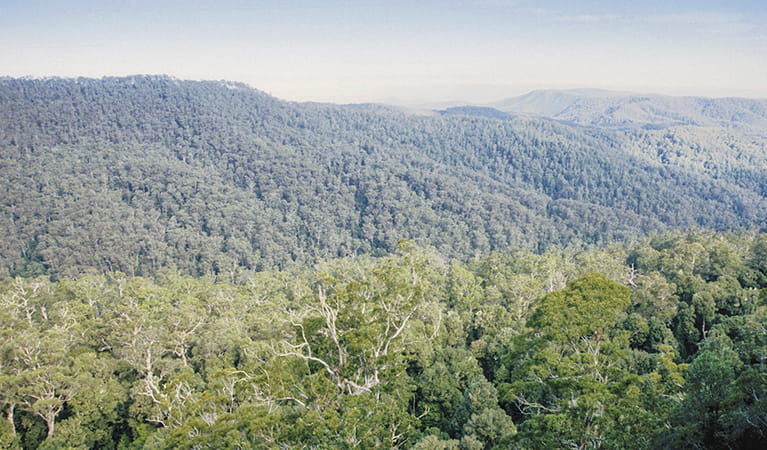
Cunnawarra is part of the New England Group of Gondwana Rainforests of Australia World Heritage Area, and was added to the Australian National Heritage List in 2007. It features some remarkable examples of subtropical, warm temperate and Antarctic beech cool temperate rainforest, making it an absolute haven for nature-lovers
The tallest trees in NSW
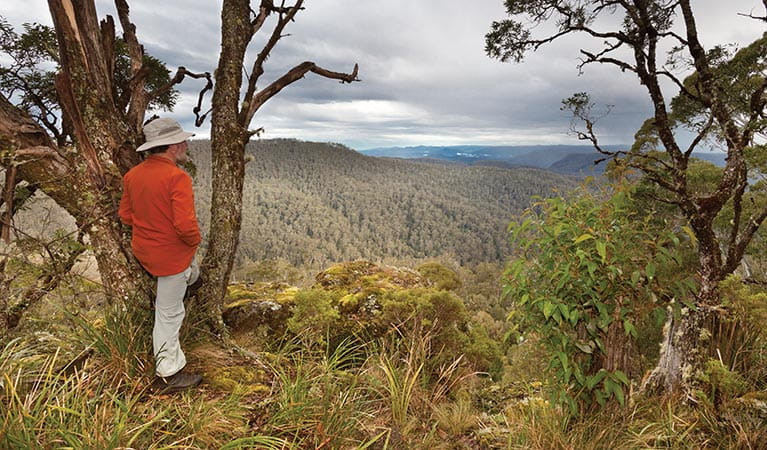
Cunnawarra boasts significant areas of old-growth forest, including large swathes of well-developed moist eucalypt trees. Perhaps one of the most imposing, though, is a stand of forest ribbon gum that contains some of the tallest recorded trees in NSW.
- Beech lookout Head to Beech lookout in Cunnawarra National Park for remarkable views out over World Heritage-listed rainforest.
Diverse wildlife
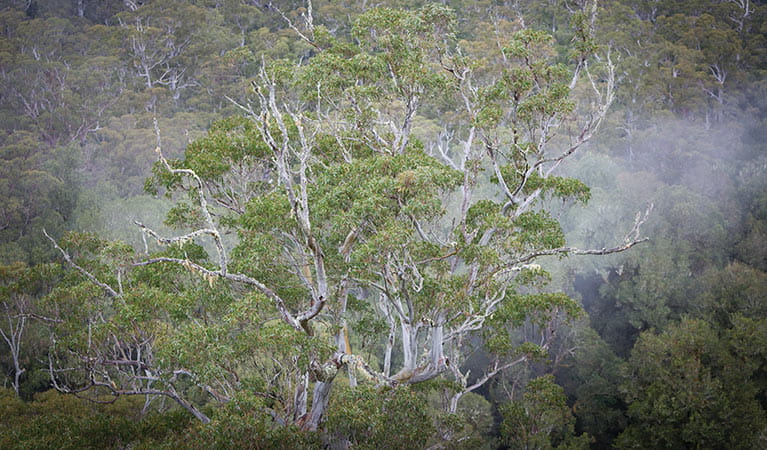
Not only is Cunnawarra home to some of the most impressive trees in NSW, it’s also home to an incredible diversity of wildlife. Among the wildlife you’re likely to spot here is a number of threatened species, including powerful owls, spotted-tailed quolls, rufous scrub-birds and glossy black cockatoos.
- Beech lookout Head to Beech lookout in Cunnawarra National Park for remarkable views out over World Heritage-listed rainforest.
What we're doing
Cunnawarra National Park has management strategies in place to protect and conserve the values of this park. Visit the OEH website for detailed park and fire management documents.

